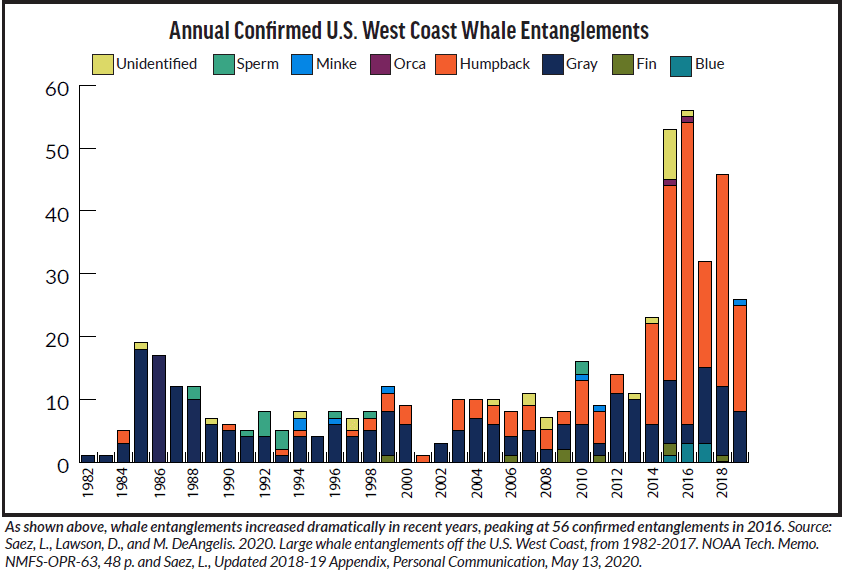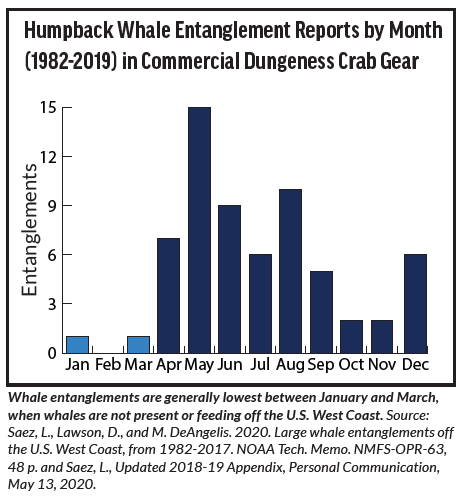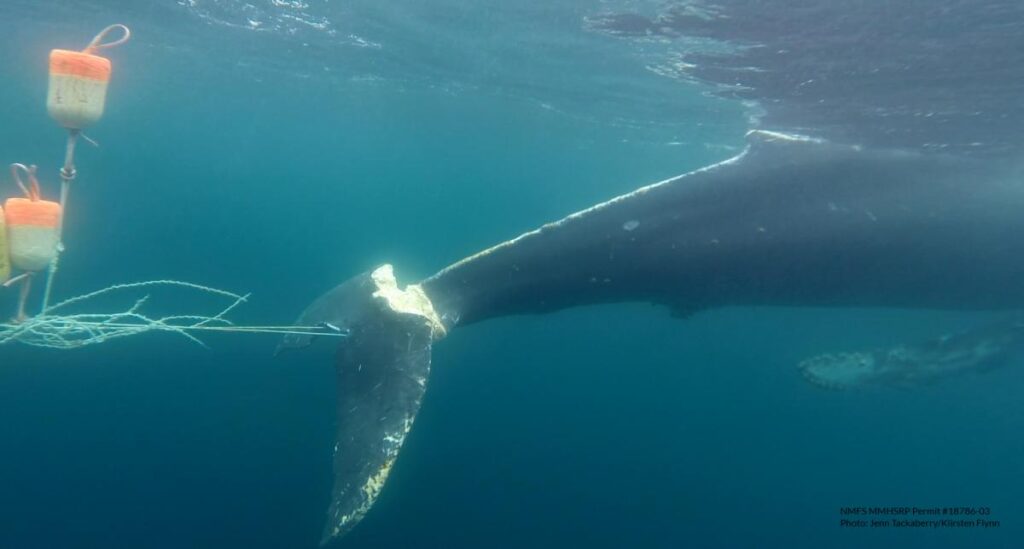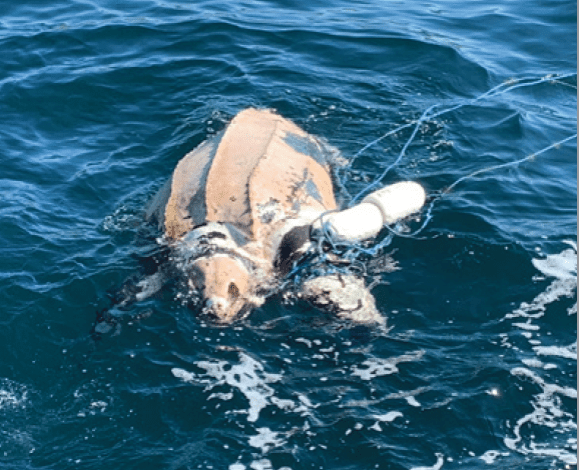How Entanglements Occur
Whales and sea turtles face a gauntlet of fishing nets, lines, and buoys as they swim and feed off the U.S. West Coast. Fisheries that deploy traps or pots use a vertical line that connects a metal trap resting on the seafloor to a buoy floating at the surface. Whales and sea turtles swimming by or feeding in the area can get tangled in this line. The line can wrap around a whale’s mouth, fluke, or pectoral fins, or around the flippers and neck of a sea turtle.
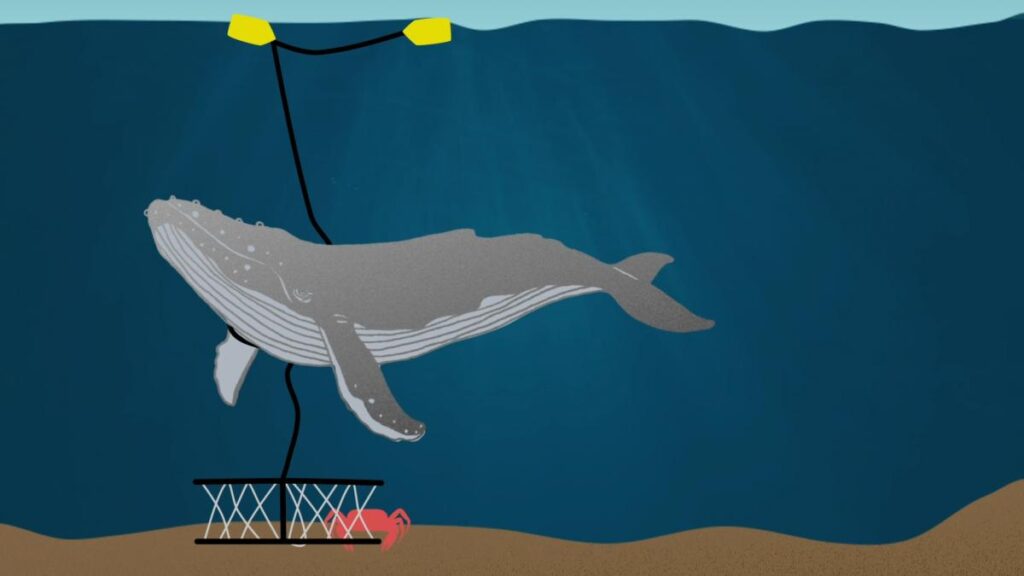
Once entangled in the fishing line, whales may suffer for months, dragging heavy fishing gear behind them that hinders their ability to feed. Many entangled whales eventually die from infection, severed appendages, starvation, drowning or a combination of these impacts. Sea turtles suffer similar fates as they get entangled and may become anchored to fishing gear and drown. While some animals are lucky enough to free themselves, or are freed by trained disentanglement response teams, approximately 75 percent of whale entanglements are fatal.
In recent years, the number of entangled whales dramatically increased, to a high of 56 confirmed entanglements in 2016. With climate change warming ocean waters, whale and sea turtle feeding grounds have shifted into new areas that overlap with crab fishing.
